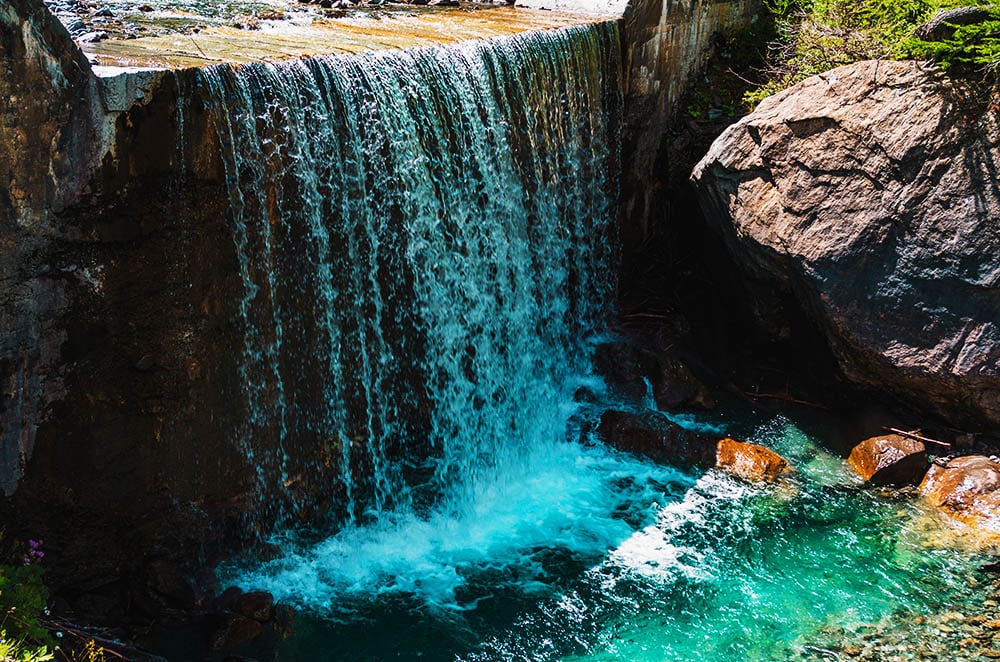Why Hydropower is the Key to Sustainable Energy
Sustainability is a topic that’s on everyone’s mind right now. As the world’s resources dwindle, and the dangers of climate change become ever more pressing, people are looking for ways to reduce their carbon footprint and switch to sustainable forms of energy. There are many different types of renewable energy, but one that stands out as particularly promising is hydropower. In this article, we’ll explore what hydropower is, how it works, and why it’s the key to sustainable energy.
What is Hydropower?
Hydropower is a form of renewable energy that harnesses the power of moving water to generate electricity. It’s been used by humans for thousands of years, with some of the earliest examples of watermills dating back to ancient Greece and Rome. In modern times, hydropower is typically generated by building dams across rivers and using the force of the water to turn turbines, which in turn generate electricity.
One of the key advantages of hydropower is that it’s completely renewable. Unlike fossil fuels, which are finite and will eventually run out, water is a resource that’s constantly replenished by the natural water cycle of evaporation, precipitation, and runoff. This means that hydropower can generate electricity indefinitely, as long as there’s enough water to keep the turbines turning.
How Does Hydropower Work?
Hydropower works by harnessing the force of moving water to turn turbines, which then generate electricity. This process involves several steps:
1. Building a dam: The first step in generating hydropower is to build a dam across a river. This creates a reservoir of water that can be used to generate power.
2. Controlling the flow: Once the dam is built, the flow of water can be controlled and regulated by opening and closing the sluice gates. This allows engineers to manage the amount of water flowing through the turbines and generate power at a consistent rate.
3. Turning the turbines: The force of the flowing water is used to turn the turbines, which are connected to a generator that produces electricity. This process is similar to how wind turbines work, but instead of using wind to turn the blades, hydropower uses water.
4. Transmitting the power: Finally, the electricity generated by the turbines is transmitted to homes and businesses via the power grid, where it can be used to power appliances and devices.
The Benefits of Hydropower
There are many benefits to generating electricity using hydropower. Here are just a few:
1. Renewable: As we’ve already mentioned, hydropower is a completely renewable form of energy. As long as there’s enough water flowing through the turbines, it can generate electricity indefinitely.
2. Clean: Unlike fossil fuels, which produce harmful greenhouse gases when burned, hydropower produces no emissions. This means that it’s a clean and environmentally friendly way to generate electricity.
3. Flexible: Hydropower can be turned on and off quickly and easily, making it a flexible source of energy that can be adjusted to meet fluctuations in demand. This is in contrast to other forms of renewable energy, like wind and solar, which are more dependent on weather conditions and can be less predictable.
4. Cost-effective: Once a dam has been built, the cost of generating electricity using hydropower is relatively low. This means that it can be a cost-effective way to generate electricity in the long run.
The Challenges of Hydropower
Of course, no form of energy generation is without its challenges. Here are some of the key challenges facing hydropower:
1. Environmental impact: Building a dam can have a significant environmental impact, as it can disrupt river ecosystems and alter the flow of water downstream. In some cases, this can lead to the displacement of wildlife and the destruction of habitats.
2. Land use: Dams require a lot of space, and building them usually involves flooding large areas of land. This can have implications for agriculture, forestry, and other land uses.
3. Weather-dependent: While hydropower is a reliable form of energy, it’s still dependent on weather conditions. In drought-prone areas, for example, water levels may become too low to generate electricity.
4. Upfront costs: While the long-term cost of generating electricity using hydropower is relatively low, the upfront costs of building a dam can be significant. This can make it difficult for smaller-scale projects to get off the ground.
Tips for Optimal Hydropower Generation
If you’re interested in generating electricity using hydropower, here are a few tips to keep in mind:
1. Choose the right location: The success of a hydropower project depends largely on the location. Look for a spot with a strong and consistent flow of water, and take into account any environmental considerations.
2. Consider the size: The size of the dam and the turbines will depend on the scale of the project. Consider factors like electricity demand, available space, and the cost of construction when deciding on the size.
3. Invest in maintenance: Hydropower systems require regular maintenance to keep them running smoothly. Make sure to invest in the proper maintenance and repair, and address any issues promptly to avoid larger problems down the line.
Conclusion
Hydropower is a promising source of sustainable energy that has the potential to revolutionize the way we generate electricity. While it’s not without its challenges and drawbacks, the benefits of hydropower are significant. By harnessing the power of moving water, we can generate electricity that’s clean, renewable, and flexible. Whether you’re a homeowner looking to generate your own electricity or a business looking to reduce your carbon footprint, hydropower is definitely something to consider.
- Revolutionize your Communication Strategy: Why a Strong Network is Key to Success - 28 de abril de 2023
- Conéctate al mundo: La importancia del Wi-Fi en español - 28 de abril de 2023
- Robots revolucionarios: cómo la tecnología está transformando nuestras vidas - 28 de abril de 2023
